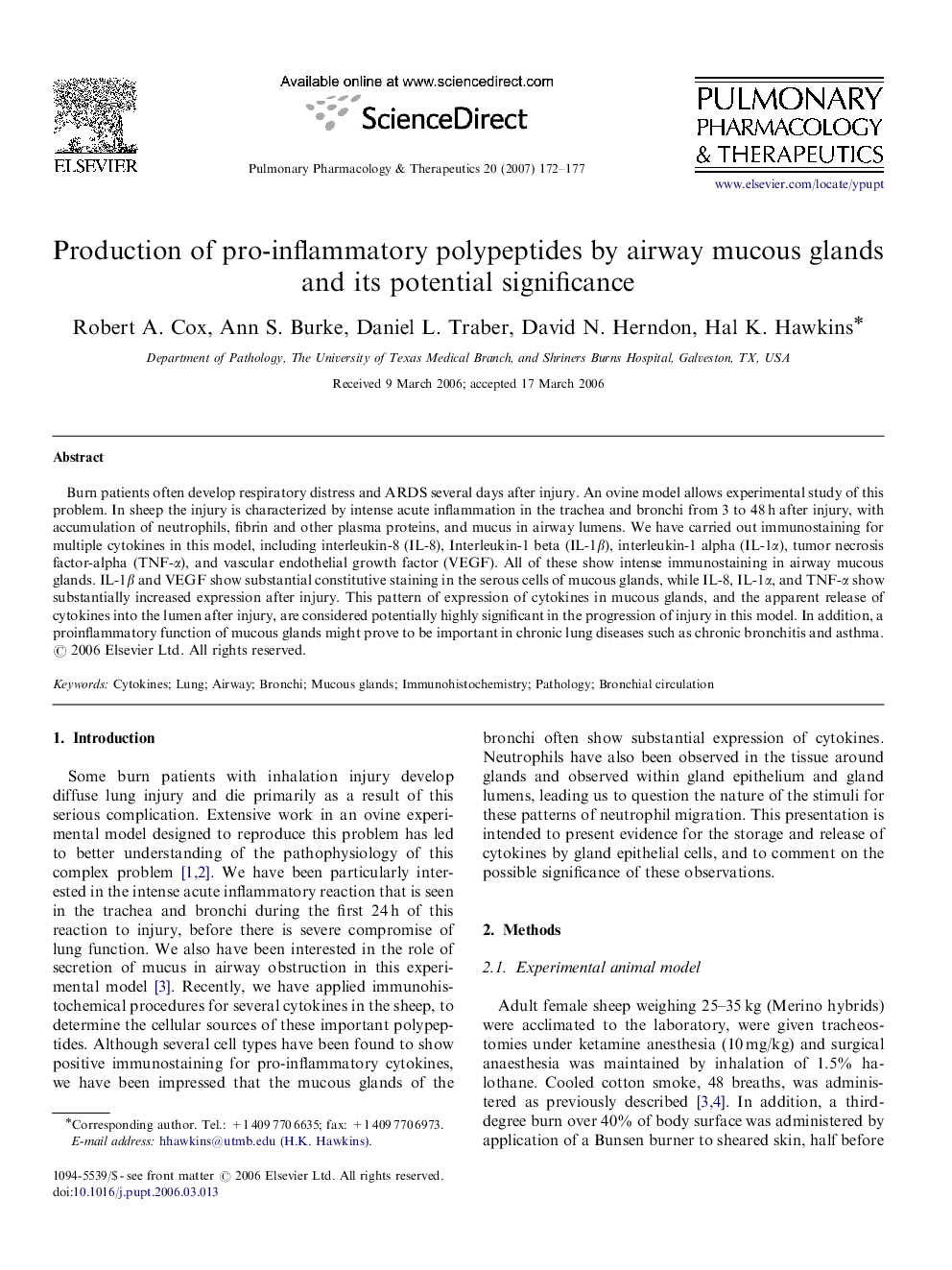| Article ID | Journal | Published Year | Pages | File Type |
|---|---|---|---|---|
| 2567780 | Pulmonary Pharmacology & Therapeutics | 2007 | 6 Pages |
Burn patients often develop respiratory distress and ARDS several days after injury. An ovine model allows experimental study of this problem. In sheep the injury is characterized by intense acute inflammation in the trachea and bronchi from 3 to 48 h after injury, with accumulation of neutrophils, fibrin and other plasma proteins, and mucus in airway lumens. We have carried out immunostaining for multiple cytokines in this model, including interleukin-8 (IL-8), Interleukin-1 beta (IL-1β), interleukin-1 alpha (IL-1α), tumor necrosis factor-alpha (TNF-α), and vascular endothelial growth factor (VEGF). All of these show intense immunostaining in airway mucous glands. IL-1β and VEGF show substantial constitutive staining in the serous cells of mucous glands, while IL-8, IL-1α, and TNF-α show substantially increased expression after injury. This pattern of expression of cytokines in mucous glands, and the apparent release of cytokines into the lumen after injury, are considered potentially highly significant in the progression of injury in this model. In addition, a proinflammatory function of mucous glands might prove to be important in chronic lung diseases such as chronic bronchitis and asthma.
